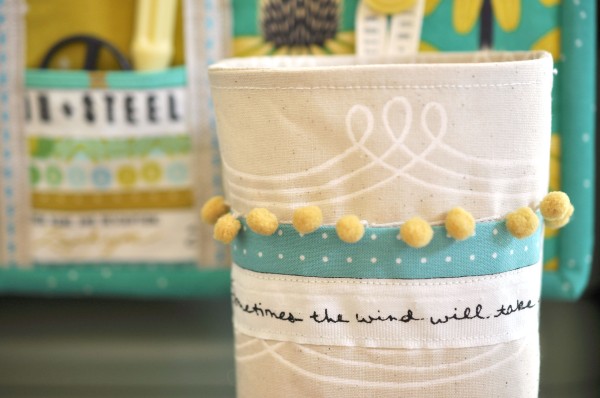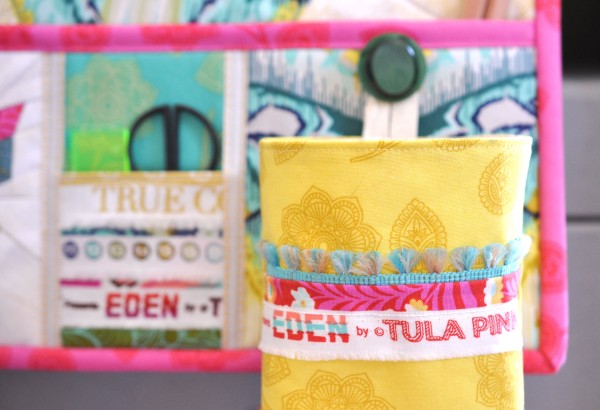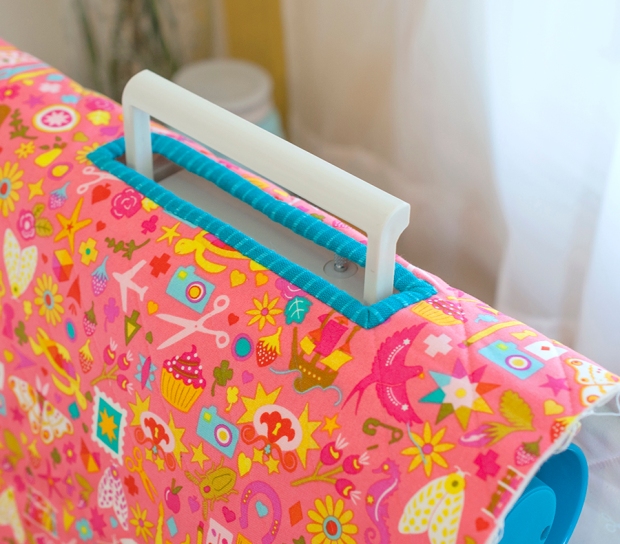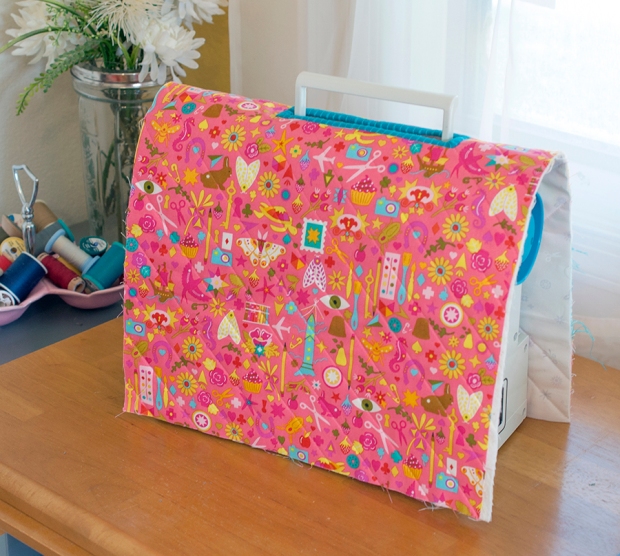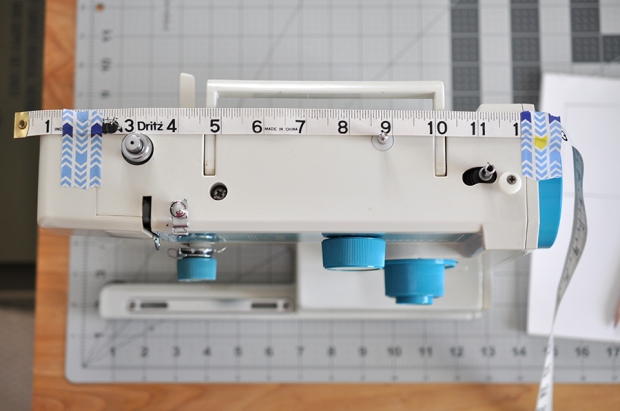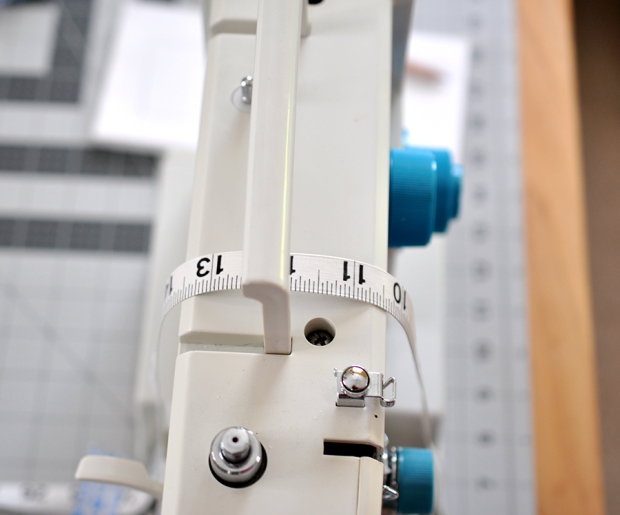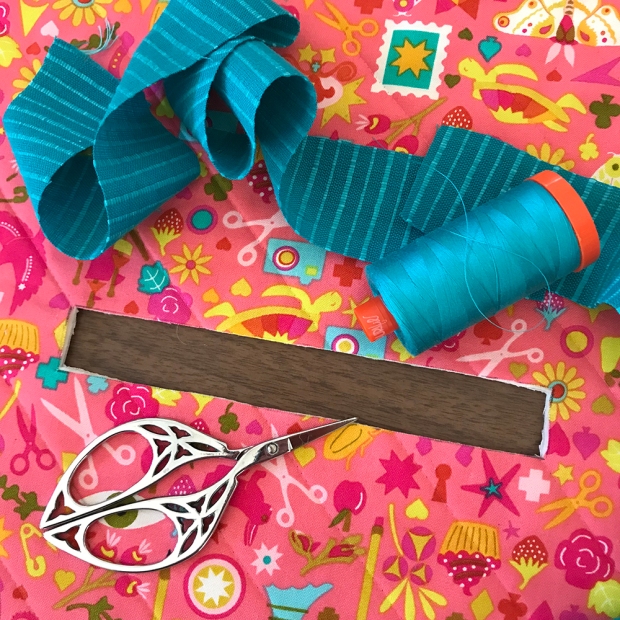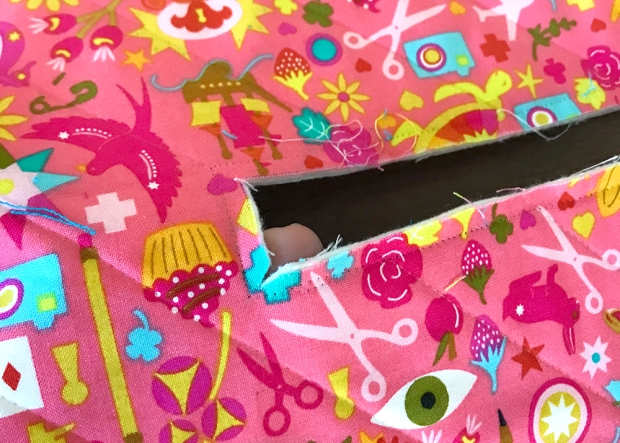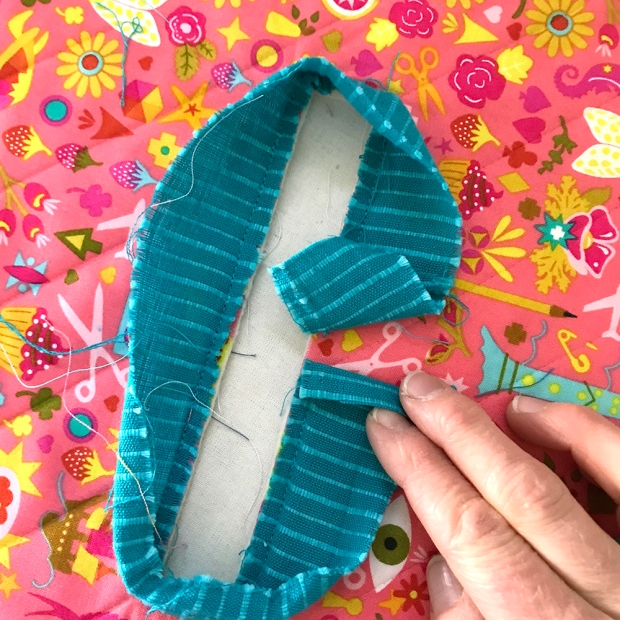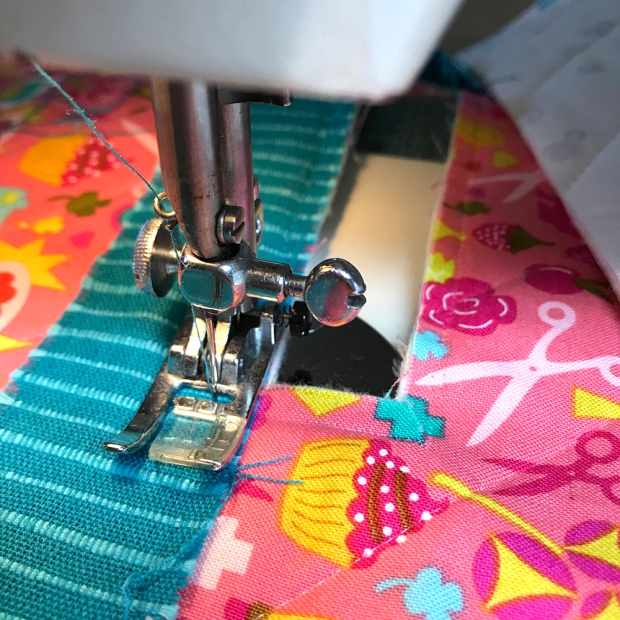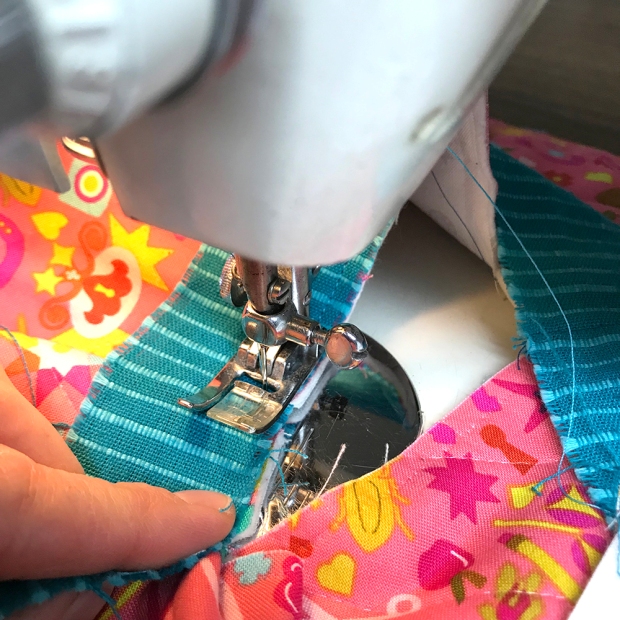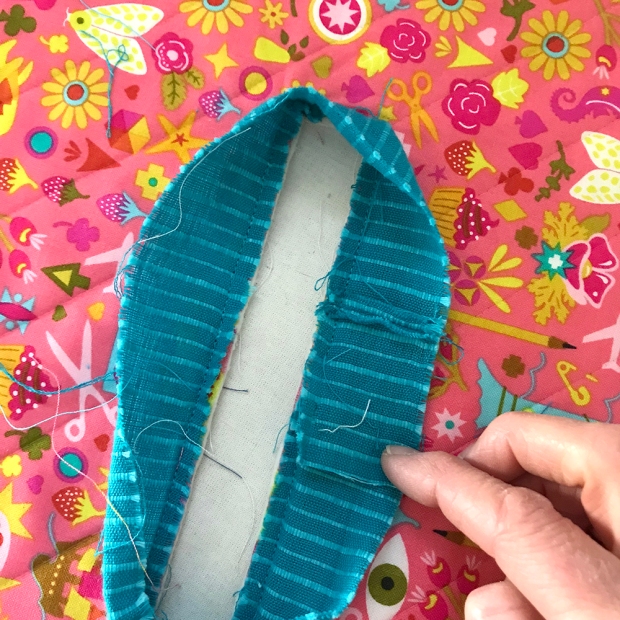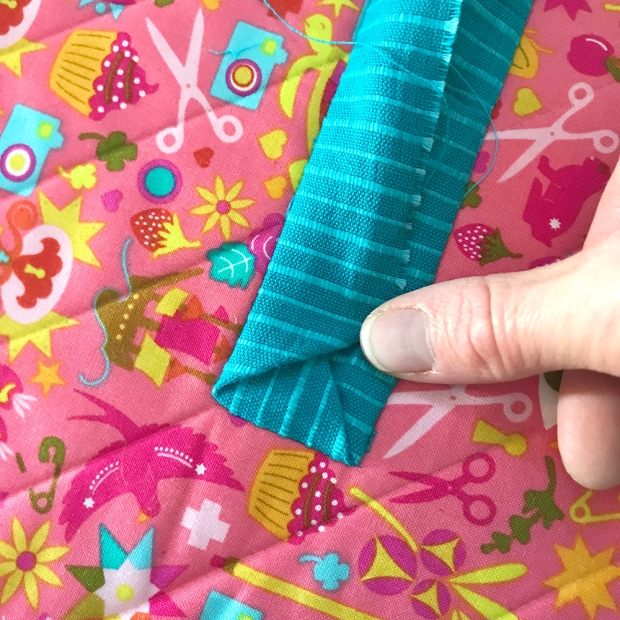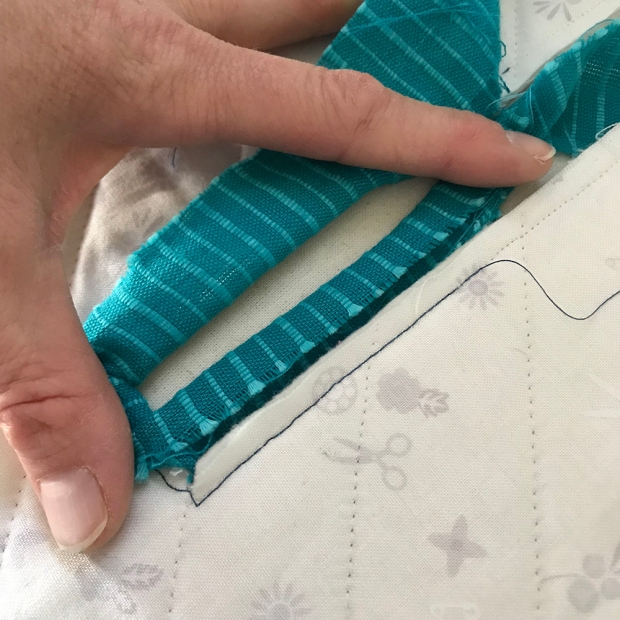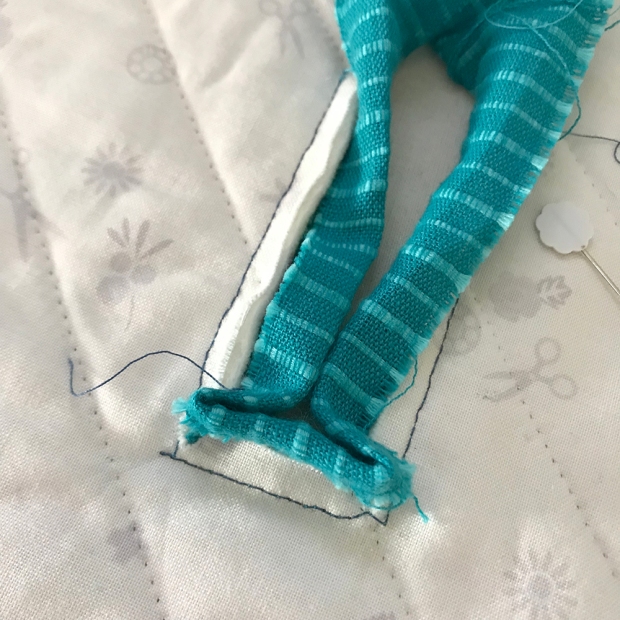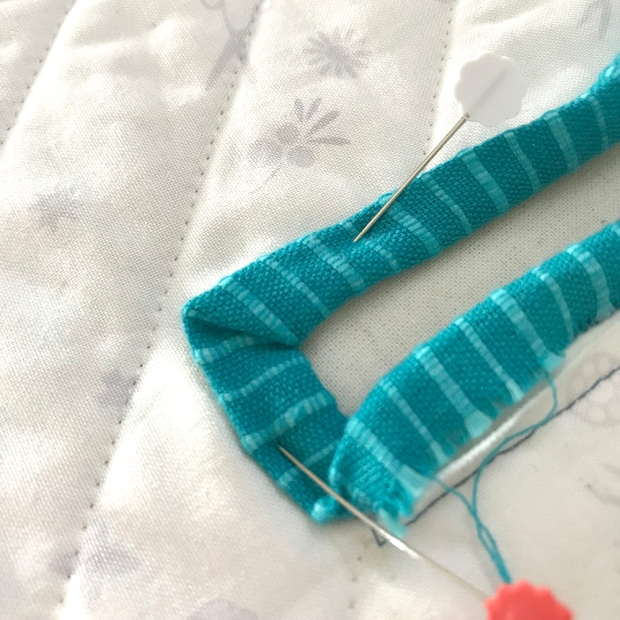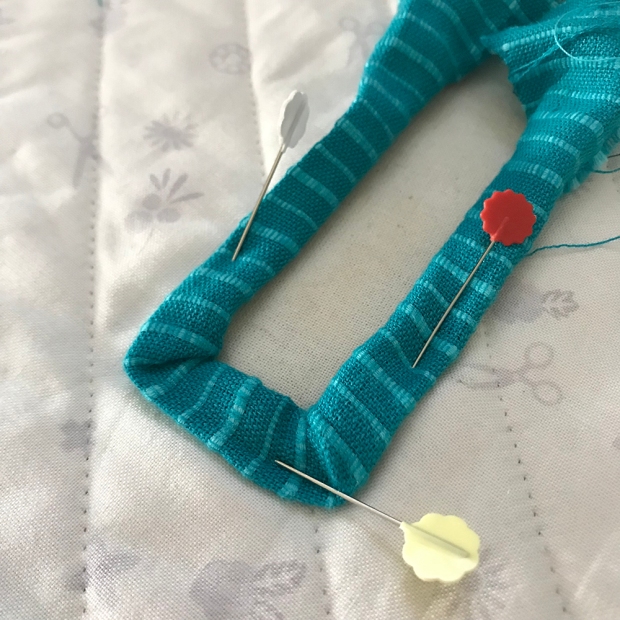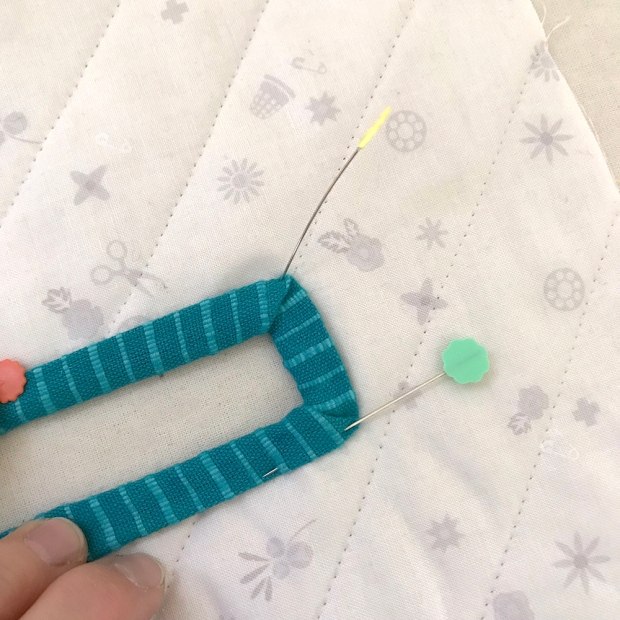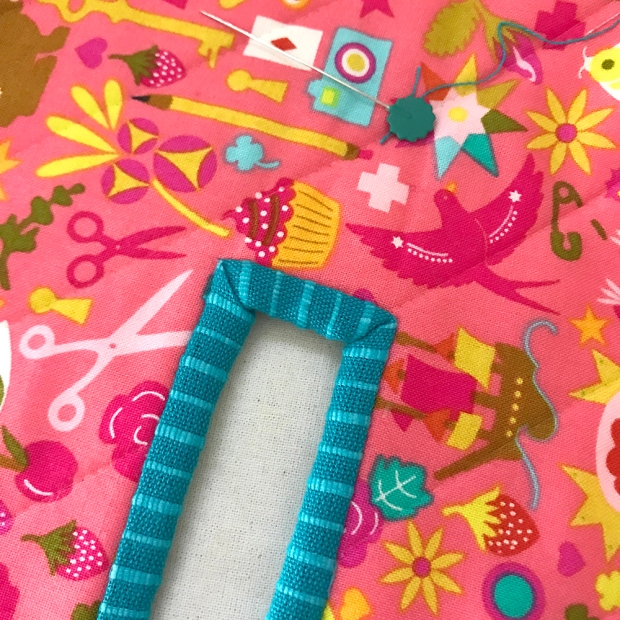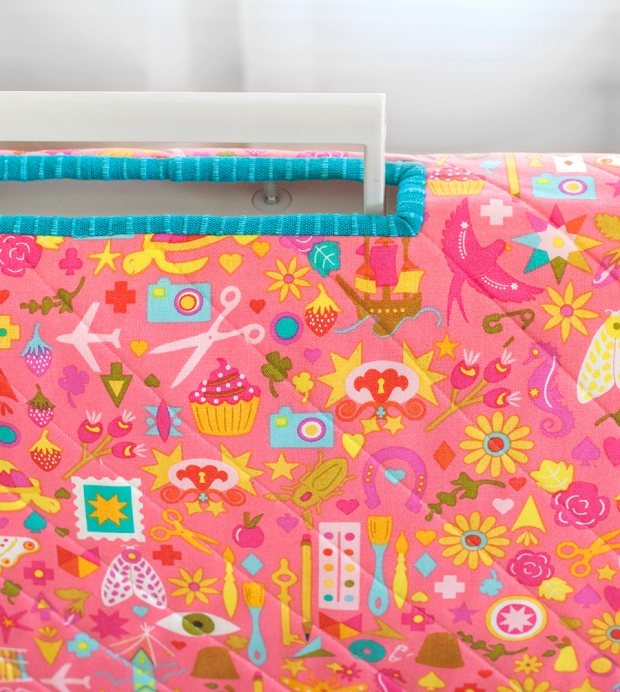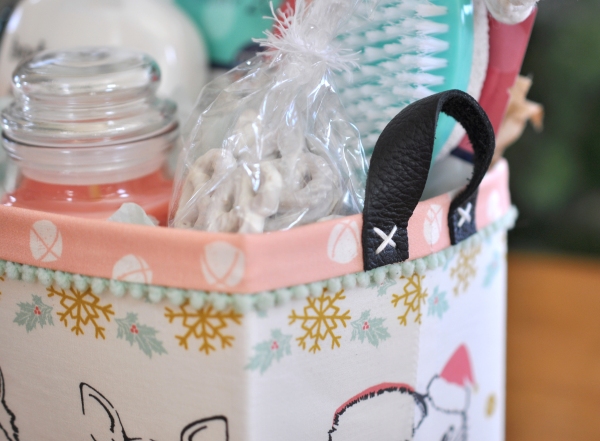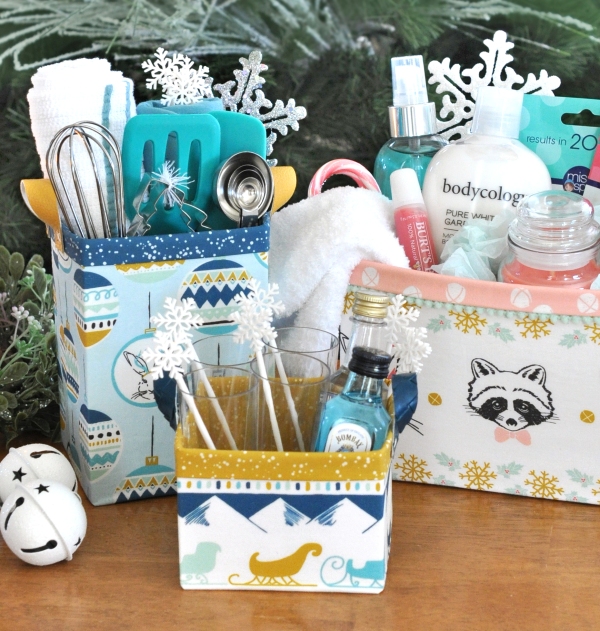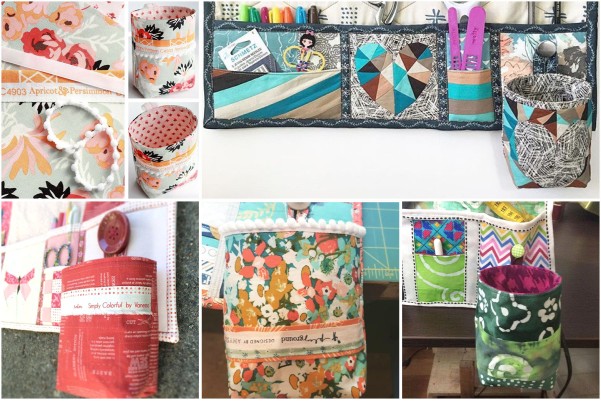
I’ve had a deep love and sense of nostalgia for rag rugs for as long as I can remember. My grandmother had them all over her little house, and when I think of my childhood, the scrappy multicolored stripes are always right there. And I’m sure I am not alone in this feeling!
I don’t know why it took me so long to make this, but I guess it was just time! Let me preface this post by saying there is nothing new or innovative about what I am making here or how I am doing it. Weaving, in an endless number of forms, has been around forever. This tutorial is simply one way that made sense to me and is perfect for using fabric scraps, which I clearly have plenty of!

I’m calling it Rip Strip Weaving because I used torn strips of cotton fabric, but the possibilities of what you can create with this loom are endless. I used 2″ strips, but plan to make my next one using a variety of widths and materials to get a very scrappy look. You can use strips of any lighter weight material for this project – cotton, knit, denim, rayon, sheer fabrics, you name it. You can also weave with yarn, twine or ribbon and in beads or any other decorations you like. I will be using a mix of all those things on my next runner. I finished the above runner with denim cuffs, but will be adding fringe tassels on the next.
I used yarn for warp threads, but you can also use any type of cord, twine, ribbon, even thin strips of fabric. I kept my warp threads pretty close together for this project, but will talk about adjusting that later in the post.

The following tutorial will show you how to make a loom in any size, and then I will do another post later this week on how to use it. I will try to be as thorough as possible, but as always, if you have any questions, feel free to leave them in the comments or email me anytime.
I will be showing the construction of the loom using basic hand tools (plus an electric drill) for those who have little or no woodworking experience. If you have experience or other power tools, you will easily see where you can take short cuts and make the construction process a little easier and faster.
Don’t be intimated by this project! This post will be long and include a lot of photos simply to make sure I make it as easy as possible, but the construction really is quite simple. Though some of the information may not make sense until you are in the process of creating the loom, please read through the entire tutorial before beginning. This is necessary to help understand all the materials and tools needed and some things to consider when determining the size of your loom. And as I mentioned, please do not hesitate to contact me anytime if you have questions before you begin or as you are working.
Now, let’s get started!
—–
MATERIALS & TOOLS
I will first cover the tools and materials I used and then talk more about amounts/sizes needed during the construction steps, as this will differ depending on the size you are making your loom.
The frame of the loom is made with 1″x3″ Poplar and you should be able to find this at most any home improvement store. I chose Poplar because it is popular in construction due to its low price, ease of use, and resistance to warping. This means your loom will keep it’s shape. Though it is called 1×3, note that the actual measurement of the wood piece is smaller. It’s just one of those weird construction things!

You will also need 1.25″ screws, wood glue (helpful, but not required), 3/16″ steel round bar rods, #212 eye screws, 1.5″ smooth finish nails and 7/8″ rubber bumpers for feet (also optional).
You will also need the following tools: Hammer, electric drill and drill bits, hand saw, metal saw, tape measure and a square (I used a small speed square). Clamps are helpful, but not necessary.
—–
PREP & PLANNING
The first step is to determine what size you would like your finished woven piece to be. I designed mine to be a table runner measuring 12″ wide by 36″ long. The loom I created can also make shorter pieces by adding a cross bar, so I could make 18″ x 12″ placemats, or any size in between. I can also use the woven panels to create things like pillows, bag panels etc, so keep this in mind when deciding what you would like to make or what size you would like your loom. One thing I want to note about size is that when I made my first runner, the 12″ width stayed true to size when I took it off the loom, but the 36″ length shrunk up about 2″. This will be affected by how you wrap your warp threads and possibly how large your piece is. Since I’ve only used this one size loom one time, I can’t really speak more on the shrink factor. Just keep this in mind when determining the size of your loom. It may be hard to end with an exact size.
You can create any size piece, large or small, using this method. You would have a pretty clunky loom if you just wanted to make coasters or something tiny, but it would still work. You could also create a good size floor rug with this method, as long as you have the open space to use the loom. The finished loom will measure about 5″ wider and higher than the size of your woven piece.

The above diagram shows the different parts of the loom and how I will be referring to them throughout the tutorial. If the woven piece you would like to make is not symmetric, your larger dimension will be used for the rails and the smaller will be the cross members. The rails will hold the anchor rods and the cross members will hold the nail posts. Your warp threads will run between the two cross members on the nail posts and you will be weaving back and forth between the rails.
The anchor rods and nail posts will be placed 1/2″ in from the center opening on the rails and cross members, so the center opening of your loom will measure 1″ smaller in width and length than the finished size of your woven piece. For example, my woven runner measures 12″ x 36 and the center opening of my loom measures 11″ x 35″.
The amount of all the materials you need will be determined by the size of the woven piece you are making. There will be a little math involved, so I recommend drawing out a little diagram of your loom as you to go to help figure out sizes and to use for reference when building.
For the wood frame, you will need two lengths of 1″x3″ Poplar that are the same as the smaller dimension of your finished woven piece (for the spacers), two lengths that are 6-8″ longer than this same dimension (for the cross members), and two lengths that are 6-8″ longer than your larger measurement (for the rails). For example, for my 12″x36″ runner, I started with two lengths of wood that measured approximately 12″, two that measured 20″, and two that measured 44″. This was a total of about 13′ of wood. You do not need to worry about having perfectly square ends on your wood lengths. The tutorial will show you how to build the frame with slight overlaps and use the edges of cross pieces to trim flush. This is the easiest method for those with no woodworking experience or fancy tools. If you have power tools or a guide available to cut square edges, you will be able to skip that step and cut your pieces to the exact size.
For the anchor rods, you will need two lengths of 3/16″ steel round bar measuring approximately 3″ longer than the larger dimension of your woven piece.
The number of screws, screw eyes, nails and bumpers needed will vary. I used 16 screws on my loom. You will need two for each corner, four total to hold the anchor rods and additional screws to attach the spacers. I used two on each 12″ length of my spacers. If your piece is larger, you will want to use a few more. You will need to place screw eyes on either end of both anchor rods and then approximately every 8″ – 9″ along the length of the rods. I used ten total on my loom. The number of nails needed will be determined by the smaller dimension of your woven piece and how far apart you want your warp threads (I will talk about this a bit more later). I placed my nails 3/8″ apart and used 31 nails on each cross member of my loom to create my 12″ runner, just for reference.
—–
FRAME CONSTRUCTION
As I mentioned above, these steps are shown using basic hand tools and not having the ability to cut your pieces with square ends. We are allowing for overhang on each piece so that you can use the cross piece to cut the edges flush. If you have square ends on your wood cuts, you can line them up flush and skip the step of trimming.
You will begin by laying one cross member piece lengthwise. This piece should measure at least 5″ longer than your shorter woven piece dimension. This allows for the width of the rail pieces plus at least 1/2″ overhang on either edge. I exaggerated the overhang in my photos so you could see it easily. I have about a 2″ overhang on all my pieces.

Next you will lay one rail length perpendicular on top using your square to make sure it is squared up. Draw a pencil line along both the left and right edges of the rail piece onto the cross member below. You can now use a clamp, if you have them, to keep this piece in place.
Next you will place the second rail piece on top of the cross member at the appropriate distance. As I mentioned before, this opening should measure 1″ smaller than the dimension of your finished woven piece. My runner was 12″ and the space between my rail pieces is 11″. Once again use your square and draw lines to mark the placement. Once in place, hold with another clamp.

The next step is to secure the rails to the cross member with screws. Using an electric drill, predrill two holes through the rail into the cross member in the orientation show above. Predrilling holes is beneficial for two reasons. First, it helps prevent possible splits in the wood, but more importantly, it helps prevent your pieces from shifting their position when the screw catches. If you have never predrilled holes before, you want to use a bit that is slighty smaller in diameter than your screw, so that your screw will still hold tight and not be loose in the hole. If you are purchasing drill bits specifically for this project, any associate at the store would be happy to help you. You will be predrilling for the 1.25″ screws and then also later for the finish nails. With that information, they can give you the bits you need.
If using wood glue, you can unclamp your pieces and spread it on the cross member between your drawn lines. Dap a few dots around and spread it evenly with your finger or a paper towel.
Lay your rails back in place on the cross member, once again using your square and double checking your opening measurement, then screw the pieces together using the 1.25″ screws through the predrilled holes.
You will now repeat these steps to add the second cross member on the opposite end of your rails. Placement will be determined by once again measuring the center opening. It should measure 1″ shorter than the larger dimension of your finished woven piece. For example, I wanted my runner to measure 36″, so the opening between my cross members was 35″.

Once both cross members are secure, you can now trim your overhanging edges flush using your hand saw. If your cuts are a little rough or your wood splinters at all, you can just smooth it with some sandpaper.
The next step is to add the spacers. These are additional cuts of poplar that will sit on top of the cross members between the rails.

The spacers will first need to be cut to size. You will use the same 1″x3″ poplar for the spacers. Begin by drawing a straight line near one end of a cut of poplar using your square to ensure it will be straight. If you already have a cut a poplar with a square cut end, you can skip this step.
Next, you will measure the space between your rails and cut your spacer piece to the same size. Repeat this for the second cross member. Be sure to measure each opening. Though they should be the same, it is best to double check!
Once your spacers are cut, you will lay them in place and once again predrill holes. I used two screws on my 11″ width. If your piece is significantly longer, you will want to use more. Be sure to keep your holes close to the outer edge of your frame so that they will not be in the way when adding your nail posts.
After predrilling, you can apply wood more glue and then screw in place, or just screw in place if not using glue. Once both spacers are in place, your frame is complete! Give yourself a hand!
—–
NAIL POSTS & ANCHOR RODS
Now that your frame is complete, it is time to add your anchor rods and nail posts. The first step is to draw guidelines to help with placement. Using a long straight edge, draw a light, thin line 1/2″ from your opening on all four sides of the frame. You will then place your nail posts.
You may some old finish nails laying around, like I did, but if you are purchasing ones to use for this project, you will want 1.5″ length. I placed my nail posts 3/8″ apart, and honestly, I don’t really know how I decided this. I just thought about how tight I would like my weave based on the size of my finished piece. There’s no good way for me to explain how to figure this out, but you can look at my runner to help you decide. The nail posts determine the space between your warp threads, which is the white yarn that runs the length of my runner. You can see my weave is fairly tight, and I love the look of it. I believe it creates a piece that isn’t too hard to create, but is solid enough to be used for a variety of things, such as using the woven panel on a pillow or bag. I would NOT recommend going smaller, or you will really fight with it when weaving. If you are making something large, such as a rug, you could easily space your nail posts at 1/2″ or wider.
With the nail post placement on my loom, I can also create a wider, more open looking weave, by not wrapping my warp threads on each post, but on every other, so you do have some flexibility with any measurement you choose.
You will begin by marking the placement of each nail post on one cross member. You will want to start in the middle of your cross member and work out to the line you drew 1/2″ into each rail. When you get to this line, it is ok if your last nail post is a little closer or farther away from your line than your measurement. You want to be at least 1/4″ away from this line or it will be too hard to weave.

The above photos show a couple things. It is important that you predrill each nail hole. Be sure to not make them too large, you want the nails very tight. But, if you do not predrill, your wood will split. I set my first few this way so that you could see the importance of predrilling.
Once your holes are drilled, you will set your nails using a hammer. You will want about 3/4″ to 1″ of nail above the wood. This measurement isn’t too important, you just want to make sure your nails are secure into the cross member spacer and will not pull out. There will be a lot of tension on them from your warp threads.
Repeat these steps to place your nail posts on the other cross member. The next step is to place your anchor rods. These keep your woven piece square and prevent it from pulling in on the sides as you get to the middle of the piece.
Your anchor rods will run along the line you drew 1/2″ in from the center opening on each rail. They will be held in place by the screw eyes. You will place one screw eye about 1″ past your nail posts toward the outer edge of your frame on each corner. You will then place another screw eye approximately every 8″ to 10″ along the length of your rails. Based on this length, figure out the measurement needed to place them evenly. For example, the space between nail posts along my rail was about 36″ so I placed one screw eye every 9″. You can see this in the full loom diagram at the beginning of the post.
You will place these by first predrilling holes, and then screwing them into the rail. A pair of pliers is helpful to screw them tightly into place.

Your 3/16″ steel round bar will slide through these screw eyes to create your anchor rod. To hold it in place, you will place a screw just past each outermost screw eye on the four corners. You will need to remove the anchor rods when you are finished weaving your piece and are ready to take it off the loom, so the screw allows you to do this.
Your round bar will need to be cut to size. First place your end screws on one cross member (predrill then screw into place, leaving enough screw exposed so the head sits just above the screw eye), then slide your steel round bar through the eye holes and mark the length you need to cut your round bar where you will place the holding screws on the other cross member. A sharpie works good for this. Slide your round bar out and cut it to size using a metal hack saw.
Slide your round bar back through the eye holes and place the second set of holding screws at the other end. Your loom is now complete! The final optional step is to install the rubber bumper feet onto the bottom at each corner of the frame to help prevent scratching on any surface you use your loom on, such as if you lay it on a floor or table.
—–
Now that your loom is ready, it’s time to use it! I’ll be posting later this week all about that, but if you have any questions about this before building your loom, please feel free to contact me here or on Instagram. Be sure to use the hashtag #ripstripweaving so I can see what you’re making! I am so excited to watch you all do this!
~ nicole
RIP STRIP WEAVING, PART TWO: USING YOUR LOOM



